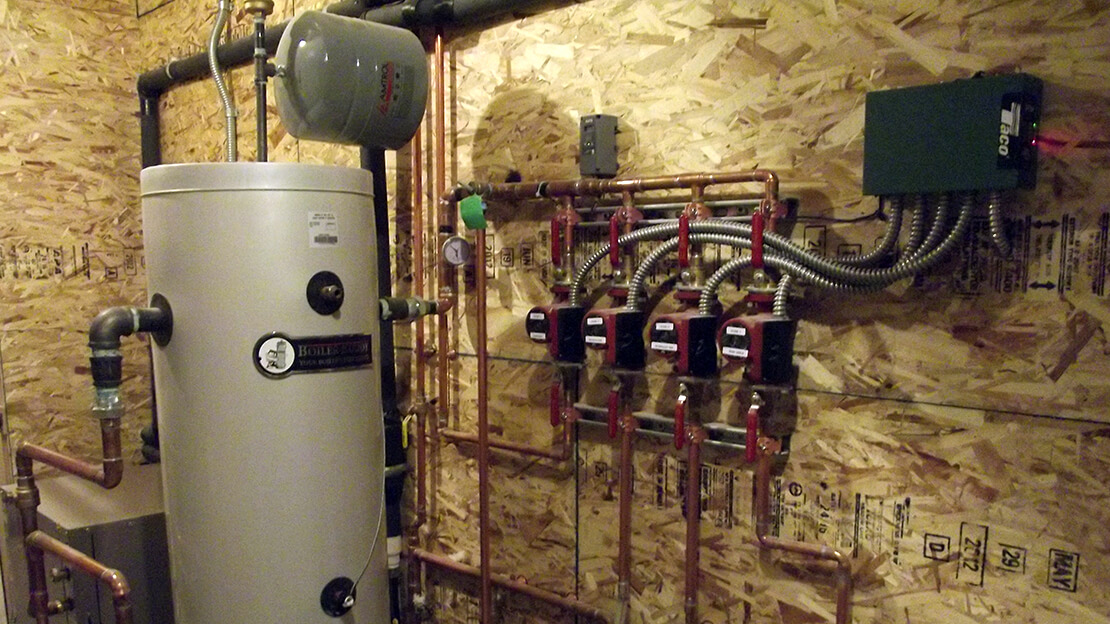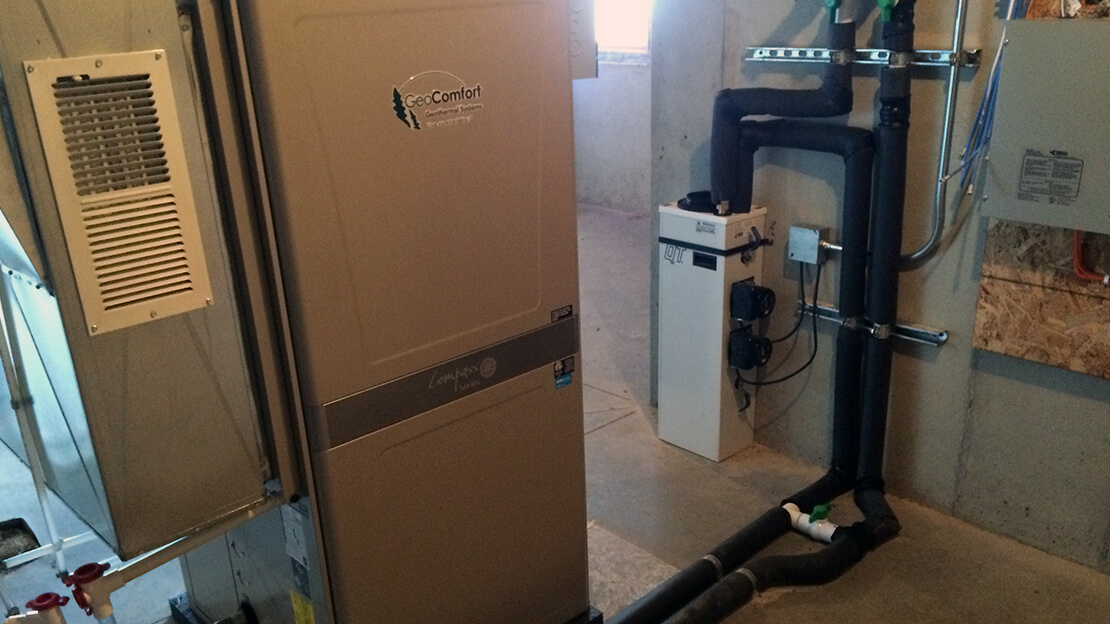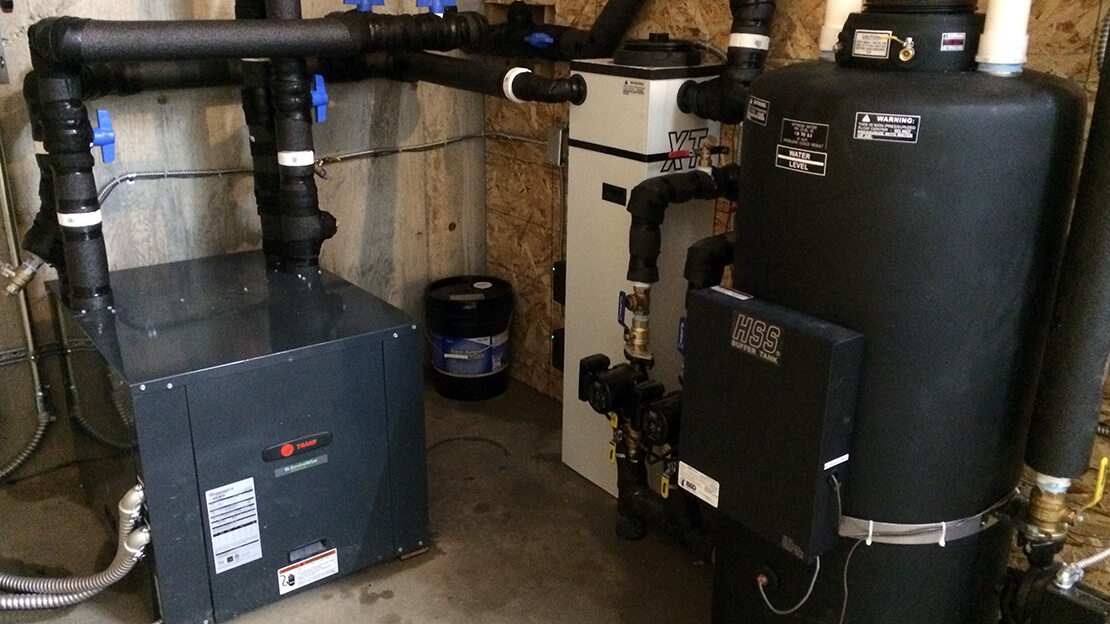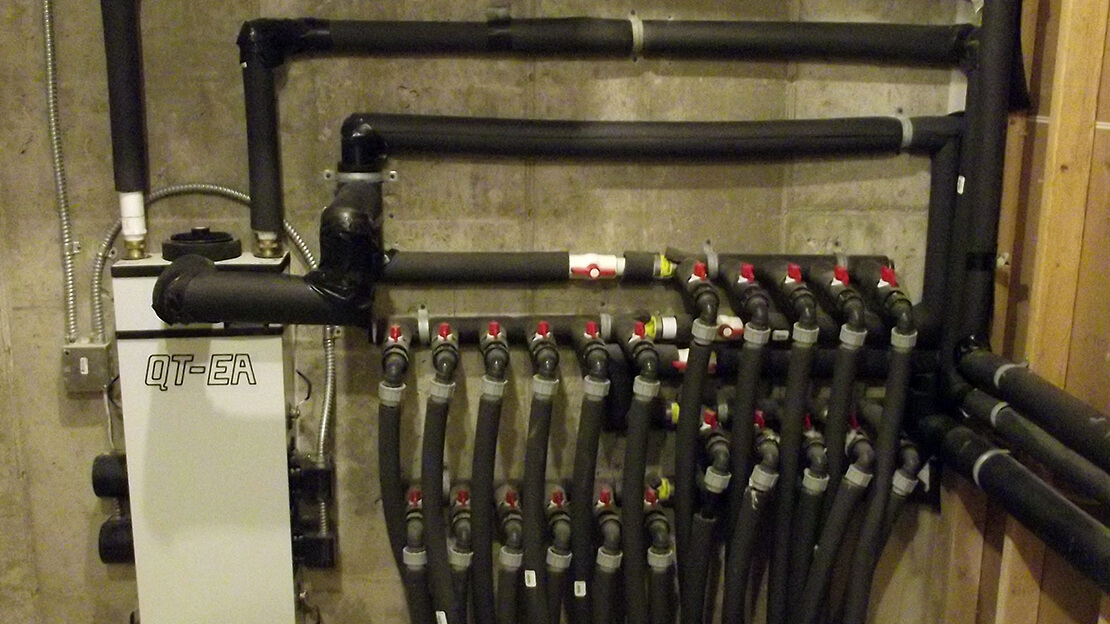Geothermal Experts
Rapid City Geothermal Experts
Are you considering a geothermal system for your new construction or home? Rapid City's Viking Mechanical is the area's leading Geothermal Expert for installation, service, and repairs.
Outdoor temperatures fluctuate with the changing seasons but underground temperatures don't. Four to six feet below the earth's surface, temperatures remain relatively constant year-round. A geothermal system, which typically consists of an indoor unit and a buried earth loop, capitalizes on these constant temperatures to provide "free" energy. In winter, fluid circulating through the system's earth loop absorbs stored heat and carries it indoors. The indoor unit compresses the heat to a higher temperature and distributes it throughout the building. In summer, the system reverses, pulling heat from the building, carrying it through the earth loop and depositing it in the cooler earth.
What makes a geothermal system different from ordinary systems?
Unlike ordinary systems, geothermal systems do not burn fossil fuel to generate heat; they simply transfer heat to and from the earth to provide a more efficient, affordable and environmentally friendly method of heating and cooling. Typically, electric power is used only to operate the unit's fan, compressor and pump.
What are the components of a geothermal system?
The three main parts consist of the heat-pump unit, the liquid heat-exchange medium (open or closed loop), and the air-delivery system (ductwork).
How much room would I need for a geothermal system?
A geothermal system can now be installed in nearly any application. In the past only a well system could be used in small yard situations. However, one of the options in tight spaces now allows for vertical loops to be used instead of horizontal ones. Just as an FYI... Newer installation equipment allows these loops to be installed without digging up your whole yard like in the old days.
How efficient is a geothermal system?
A geothermal system is up to almost 5 times more efficient than the most efficient ordinary system. Because geothermal systems do not burn fossil fuels to make heat, they provide up to almost 5 units of energy for every one unit used to power the system.
Is the efficiency rating actual or just a manufacturer's average?
All heating and cooling systems have a rated efficiency from a U.S. governmental agency. Fossil fuel furnaces have a percentage efficiency rating. Natural gas, propane and fuel oil furnaces have efficiency ratings based on laboratory conditions. To get an accurate installed efficiency rating, factors such as flue gas heat losses and cycling losses caused by oversizing, blower fan electrical usage, etc., must be included.
Geothermal heat pumps, as well as all other types of heat pumps, have efficiencies rated according to their coefficient of performance or COP. It's a scientific way of determining how much energy the system produces versus how much it uses. Most geothermal heat pump systems have COPs of 3-4.5. This means for every unit of energy used to power the system, 3-4.5 units are supplied as heat. Where a fossil fuel furnace may be 78-90 percent efficient, a geothermal heat pump is about 400 percent efficient. Some geothermal heat pump manufacturers and electric utilities use computers to accurately determine the operating efficiency of a system for your home or building.
Do geothermal systems require much maintenance?
No. Geothermal systems are virtually maintenance free. When installed properly, the buried loop will last for decades! And the other half of the operation—the unit's fan, compressor and pump—is housed indoors, protected from the harsh weather conditions. Usually, periodic checks and filter changes and annual coil cleaning are the only required maintenance.
What does geothermal mean for the environment?
Geothermal systems work with nature, not against it!




